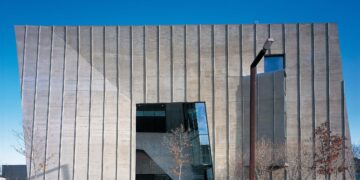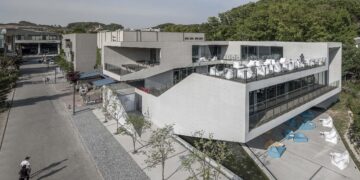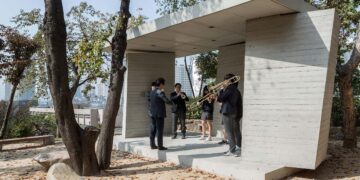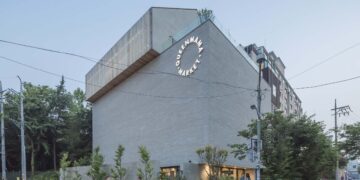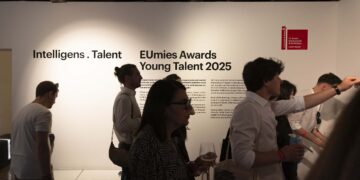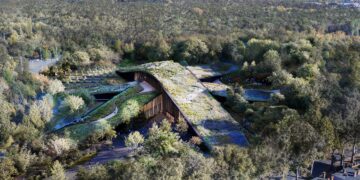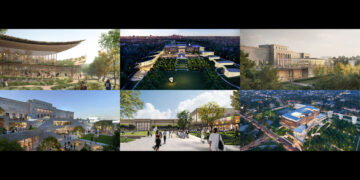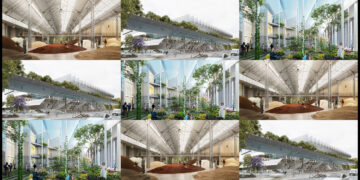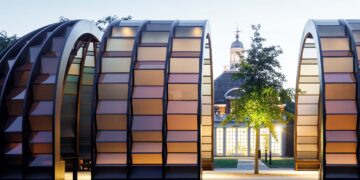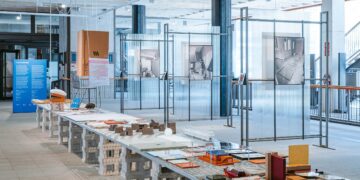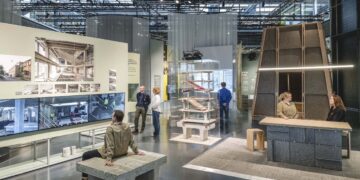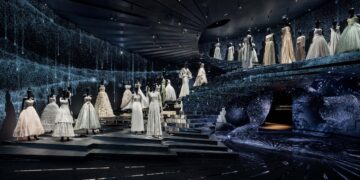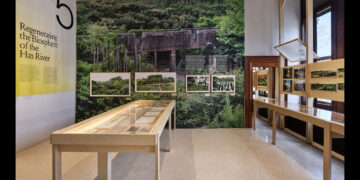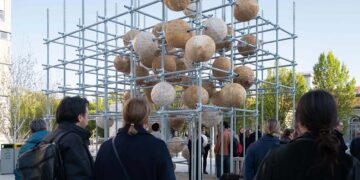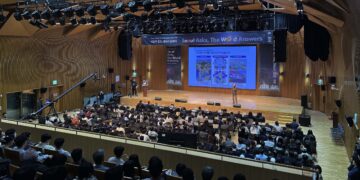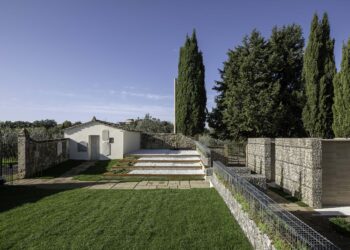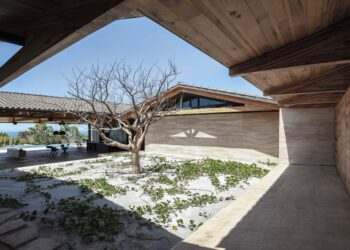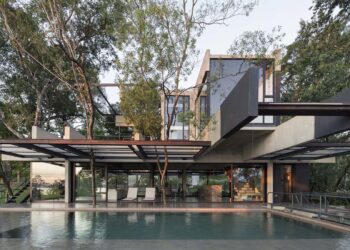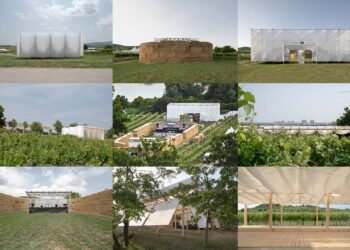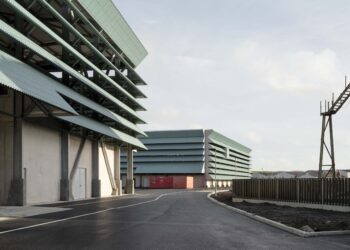KIT Energy Lab 2.0 in Karlsruhe defined by translucent polycarbonate and saw-tooth roof
톱니 모양 지붕 아래 투명 폴리카보네이트 외피를 덮은 KIT 에너지 연구소 2.0
Behnisch Architekten | 베니쉬 아키텍튼
The Energy Lab 2.0 at Karlsruhe Institute of Technology (KIT) is an intelligent platform set up to explore the interplay of components in the energy systems of the future and in particular to speed up energy transition in Germany, through the integration of renewable energy in the production of electricity. Electrical, thermal and chemical energy flows, as well as new information and communication technologies, are combined in a cluster of facilities. The project partners are the Helmholtz Centers, the National Aeronautics and Space Research Center of the Federal Republic of Germany (DLR) and Forschungszentrum Jülich (FZJ).
독일의 카를스루에 공과대학 에너지 연구소 2.0은 미래 에너지 시스템을 연구하는 곳으로, 재생 에너지를 이용해 전력을 생산하는 에너지 전환과 관련한 분야에 주력한다. 지속 가능한 에너지를 충분히 생산해 저장한 뒤 안정적으로 분배하는 일을 연구하는 일인데, 이 프로젝트는 헬름홀츠 센터, 독일 국립 항공우주 연구소, 그리고 율리히 연구소가 공동으로 맡아 진행 중이다.
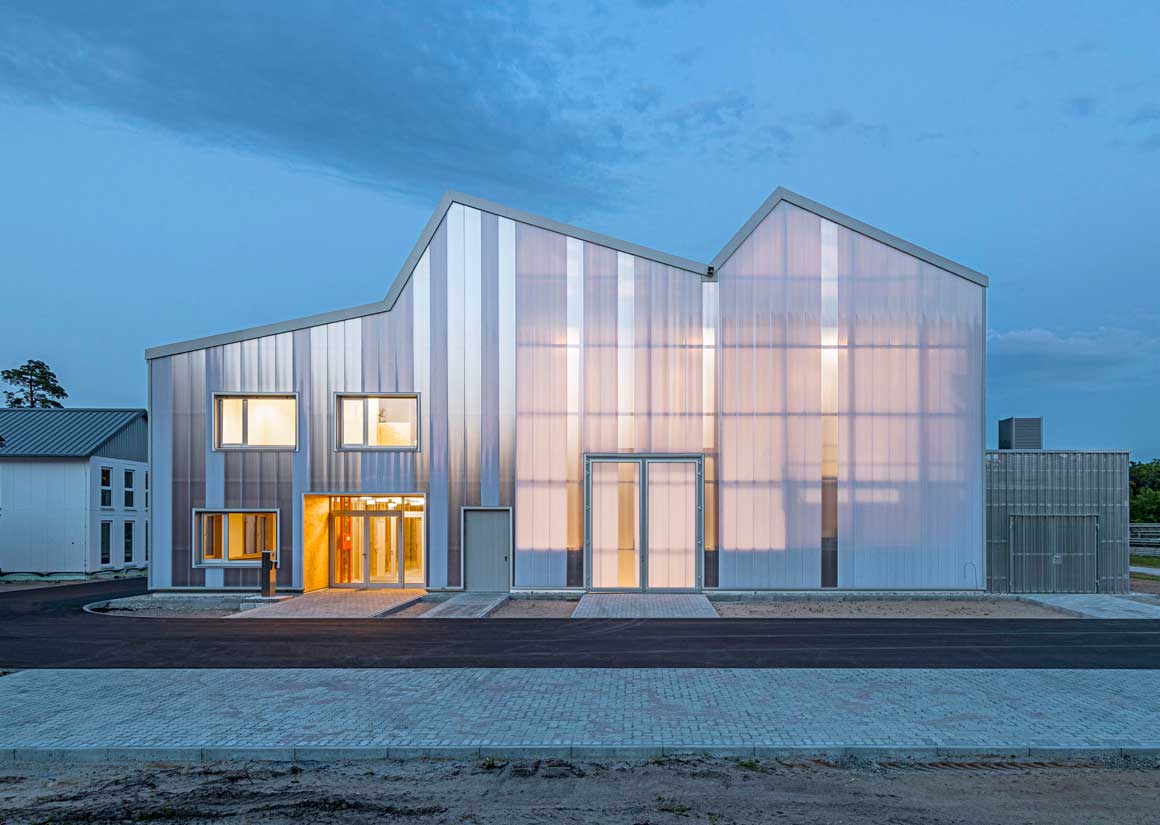

Project: KIT Energy Lab 2.0 / Location: Hermann-von-Helmholtz-Platz 1, 76344 Eggenstein-Leopoldshafen, Germany / Architect: Behnisch Architekten / Partner: Jörg Usinger / Project leader: Kari Silloway (from 1.17), Nevyana Tomeva (to 12.16) / Engineer: Norconsult / Client: Facility Management KIT / Gross area: 1,730m2 / Net floor area: 1,238m2 / Volume: 1,730m3 / Number of workplaces: 25 / Number of floors above ground: 2 / Planning and construction: 2015~2019 / Photograph: Adam Mørk
The new construction of Building 668, on a site formerly used for experiments with solar energy in the north of the campus, provides an attractive, high quality and flexible location for this research. The detached building has the appearance of a homogenous unit with a translucent polycarbonate building envelope that allows the wooden construction on the interior to shimmer through, and accommodates an ample, column-free test hall as well as a two-story office wing.
태양 에너지 실험실이었던 이곳은 캠퍼스 북쪽 끝에 자리해 연구를 진행하기에 좋은 조건이었다. 지붕이 톱니 모양으로 잘린 일체형 건물은 내부 목조가 슬며시 비치는 반투명 폴리카보네이트로 마감했다. 실내는 기둥이 필요 없는 실험실용 홀과 2층짜리 사무 공간으로 구분된다.
The main approach is from the west via a glass vestibule in the central zone of access, which leads between the offices and the hall alongside a lightweight glass wall, into the building, allowing generous views between these building sections. The right side opens up onto a hall, while the office spaces are aligned on the left. The control station, the test preparation area, the meeting rooms and the auxiliary rooms are also located here. In the building center, a stairway and elevator lead to the upper story, where additional office and preparation rooms are located, as well as a small staff kitchen with seating. The rooms allocated to the test areas are adjacent to the atrium and provide direct views into this open space.
건물 서편에 위치한 유리 현관문으로 들어가면 사무실과 실험실 사이를 가르는 복도가 펼쳐진다. 경량 유리 벽 너머로 건물 단면이 한 눈에 보인다. 통로 우측에 실험 공간이, 좌측에는 사무실이 늘어선다. 통제실, 실험 준비실, 회의실, 기타 보조 공간 또한 이곳에 자리한다.
The test hall accommodates the areas called “Power-Hardware in the Loop” (PHIL) and “Smart Energy System Control Laboratory” (SESCL) as well as assembly areas for tests. The hall and the saw-tooth roof are generously clad with translucent polycarbonate plates, which allow a consistent amount of daylight to enter the entire test area. Adjacent assembly areas for technical construction elements with large thermal loads are not part of the energy system of the building envelope but instead, with their slatted façade, ensure consistent heat removal and ventilation of the construction elements.
중심부 계단과 엘리베이터로 연결된 2층에도 사무 공간과 실험 준비실을 추가로 배치하고, 앉아서 쉴 작은 탕비실도 마련했다. 실험실은 아트리움 옆에 자리해 완전히 개방된 구조다. 하드웨어 연계 시뮬레이션 연구실, 스마트 에너지 시스템 통제 실험실과 더불어 여러 실험 공간이 한데 모여 있다.
발열량이 큰 기계를 둔 본관 바로 옆 조립실은 본관과 별개로 마감해 기계에서 발생하는 열을 계속해서 제거하고 통풍이 원활하도록 설계했다.
The material of the hall incorporates references to the neighboring buildings with their industrial character. Window openings set in specific places in the office façade enable a selective illumination of the interior spaces with their unobtrusive design. While here wood and simple glass façades are the dominant design element, the hall is characterized by the polycarbonate façade and the wooden construction of the saw-tooth roof.
건물에 사용한 자재는 이웃한 산업 건물의 특성을 참고해 선택했다. 특정 부위에만 선택적으로 설치해 내부공간에 빛을 끌어들이되, 불필요한 시선을 끌지 않는다. 어두운 밤이면 은은한 조명이 켜지듯 빛이 새어 나오면서 내부 구조물의 실루엣이 어렴풋이 드러난다.

